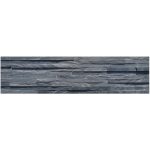Introduction
Precast cultured stone is a versatile and popular building material that has been used for centuries to enhance the aesthetics of residential and commercial buildings. With its durability, design flexibility, and cost-effectiveness, precast cultured stone offers a wide range of benefits that make it a preferred choice for architects, contractors, and homeowners alike. In this article, we will explore the various aspects of precast cultured stone, including its manufacturing process, applications, advantages, and sustainability.
Manufacturing Process
Precast cultured stone is manufactured using a combination of natural aggregates, pigments, and cementitious materials to create a product that closely resembles natural stone. The manufacturing process begins with the selection of high-quality raw materials, which are carefully mixed in precise proportions to achieve the desired color and texture. The mixture is then poured into molds that are designed to replicate the appearance of natural stone, such as limestone, granite, or travertine.
Once the mixture has been poured into the molds, it is allowed to cure and harden before being removed from the molds. The precast cultured stone pieces are then finished by hand to add texture and detail, such as chiseling or sandblasting, to create a more authentic appearance. Finally, the precast cultured stone pieces are cured in a controlled environment to ensure strength and durability before being shipped to the construction site.
Applications
Precast cultured stone is a versatile building material that can be used in a wide range of applications, both interior and exterior. Some common applications of precast cultured stone include:
1. Facades: Precast cultured stone is often used to enhance the appearance of building facades, providing a timeless and elegant look that mimics the beauty of natural stone. It can be installed as cladding on the exterior walls of buildings, creating a visually striking and durable finish.
2. Fireplaces: Precast cultured stone is a popular choice for fireplace surrounds and mantels, adding a touch of sophistication and warmth to any room. The variety of colors and textures available in precast cultured stone allows for endless design possibilities to complement different interior styles.
3. Accent walls: Precast cultured stone can be used to create eye-catching accent walls in both residential and commercial spaces. Whether used in a living room, hallway, or retail store, precast cultured stone adds visual interest and texture to the space, making it a focal point of the room.

4. Landscaping: Precast cultured stone is also commonly used in landscaping projects to create retaining walls, garden borders, and outdoor living spaces. Its durability and low maintenance requirements make it an ideal choice for outdoor applications, where it can withstand exposure to the elements and retain its beauty for years to come.
Advantages
There are numerous advantages to using precast cultured stone in construction projects, making it a preferred choice for architects and builders. Some of the key advantages of precast cultured stone include:
1. Aesthetics: Precast cultured stone closely resembles natural stone in appearance, with a wide range of colors and textures available to suit different design preferences. Its authentic look adds a touch of elegance and sophistication to any building, enhancing its overall aesthetic appeal.
2. Durability: Precast cultured stone is a durable building material that can withstand the test of time and exposure to harsh weather conditions. Its strength and resilience make it a long-lasting investment that requires minimal maintenance to keep it looking like new.
3. Cost-effectiveness: Compared to natural stone, precast cultured stone is a more affordable option that offers similar aesthetic benefits at a lower cost. Its lightweight nature also reduces installation time and labor costs, making it a budget-friendly choice for construction projects.
4. Design flexibility: Precast cultured stone is available in a wide range of shapes, sizes, and textures, allowing for endless design possibilities. Whether used to create intricate patterns or simple accents, precast cultured stone can be customized to suit the unique requirements of any project.
5. Sustainability: Precast cultured stone is an environmentally friendly building material that is made from natural aggregates and recycled materials. Its manufacturing process produces less waste and consumes fewer resources compared to natural stone, making it a sustainable choice for green building projects.
Sustainability
In addition to its aesthetic and functional benefits, precast cultured stone is also a sustainable building material that aligns with the principles of green construction. By using recycled materials and minimizing waste during the manufacturing process, precast cultured stone helps reduce the environmental impact of construction projects. Its durability and long lifespan further contribute to sustainability by reducing the need for frequent replacements and repairs, conserving resources in the long run.
Conclusion
Precast cultured stone is a versatile and durable building material that offers a wide range of benefits for architects, contractors, and homeowners. With its authentic appearance, durability, cost-effectiveness, and sustainability, precast cultured stone is a preferred choice for enhancing the aesthetics of buildings both interior and exterior. Whether used in https://www.fs-slate.com , fireplaces, accent walls, or landscaping projects, precast cultured stone adds a touch of elegance and sophistication to any space, making it a timeless investment in the beauty and durability of a building.
